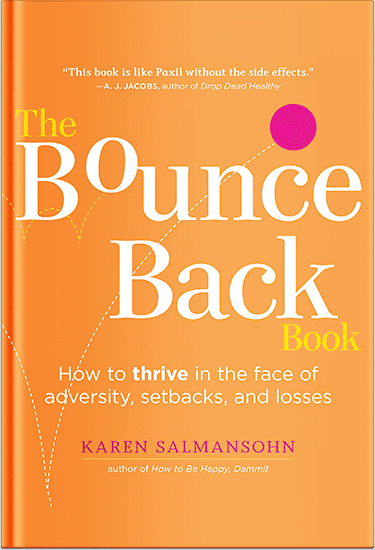 Do you know the pros and cons of choosing alternative lenders versus traditional lenders for your business? Well, I’m here to clearly explain! Read on!
Do you know the pros and cons of choosing alternative lenders versus traditional lenders for your business? Well, I’m here to clearly explain! Read on!
If there’s one thing that’s common among businesses, it’s that at one point or the other, they will eventually need to apply for business financing.
Businesses, whether a start-up or an established one, require a significant amount of capital to run and grow. Oftentimes, they would need the help of outside sources to get the money they need for their business.
Businesses usually have two options when it comes to getting financing:
- ask for help from the traditional lenders
- go with alternative lenders
The biggest difference between the two usually comes down to how they choose their borrowers and how fast they can grant the funding. The question is, which option is the most feasible and least stressful for your business?
As you might know, I’m a bestselling author and happiness researcher.
I wrote a book called Happy Habits.
In my research, I learned that you can boost your success and happiness by building up specific positive habits- and busting those naughty ones. In this article I’ll be focusing on building up your business habits!
Below we’ll take a closer look at the benefits and disadvantages of traditional lenders versus alternative lenders. Plus I will help you to choose which option is the best fit for your business.
What are Traditional Lenders?
Plain and simple, traditional financing is about getting credit or business loans from banks and credit unions. Business owners usually consider traditional lending institutions first before going to alternative lenders. However, they can be picky when it comes to who they grant business loans to. This is because unlike alternative lenders, traditional lenders are pretty risk-averse.
They want to make sure that they’re offering loans only to businesses with the lowest risk.
It’s also because of that exclusivity that they can afford to offer the most flexible and favorable loan terms to their borrowers. However, due to some restrictions, another option some lenders can offer is invoice factoring for small businesses.
Reminder:
- Invoice factoring lets business owners sell pending invoices to lending companies in exchange for fast cash. This is a great way to help some business expand their capital.
A healthy business typically translates to lower interest rates and longer repayment periods. With that, it makes sense as to why they’re the first ones that business owners turn to for funding.
If you’re considering traditional lending, we’ll break down its pros and cons below.
Pros of Traditional Lenders
1. They have a lower annual percentage rate (APR).
For starters, traditional financing usually offers a lower APR compared to other funding sources. An APR is a yearly fee that banks charge borrowers for the loans they took out. With traditional lenders, borrowers can get as little as 3% to 8% APR, compared to two-digit APRs for alternative lenders. This translates to more savings in the long-run.
2. Banks offer longer repayment terms.
For long-term loans, banks can grant businesses with repayment periods ranging from 10 to 25 years. Since banks only approve those companies with a healthy cash flow, good credit standing, and high annual revenue, they can afford to grant businesses with more extended repayment periods.
3. They offer high borrowing limits.
Again, banks only approve established and well-performing businesses. With a lesser risk involved, banks can grant these businesses a higher borrowing limit. At times, traditional lenders can offer as much as $5,000,000 to business owners, depending on the type of loan they’re applying for.
Cons of Traditional Lenders
1. They’re harder to qualify for.
The biggest downside of bank loans is that small businesses typically have a hard time qualifying for one because of their stringent requirements. At the very least, your business should meet the following qualifications:
- At least a few years old
- Have an annual revenue of at least $250,000
- Must have a credit score of at least 700 or higher.
Businesses in their early stages of operation may have a hard time meeting these requirements. Although banks might go soft on some of the requirements, like considering firms with less than $250,000 in annual revenue, in general, you’ll have to prove that your business is performing well and generating a positive cash flow every month to convince banks that you can afford the loan repayments.
2. They require sufficient collateral.
As part of their attempt to eliminate all risks, banks and credit unions may also need to present adequate collateral for security. Typically, the asset should more or less have an equal value to the loan amount. This could be problematic for smaller and younger businesses as they may still not have collected enough assets to secure bank loans.
3. Borrowers have to submit an extensive list of paperwork.
Compared to alternative lenders, traditional lenders may also require borrowers to submit a litany of paperwork. Aside from the company’s primary information and balance sheets, you may also have to submit a business plan, business lease, tax returns, financial statements, the owner(s) resumes, business legal structure, etc.
4. The funding approval could take months.
Banks have a system involving multiple employees reviewing the documents and applications you submitted. The verification of paperwork and vetting alone can take weeks to complete. As part of mitigating the risks, banks want to ensure that all paperwork submitted is accurate and up-to-date, so they would have to go through them carefully before proceeding with their decision.
In general, the approval for a bank loan could take at least 2 to 3 months, given that there are no issues along the way (i.e., incomplete documents, inaccurate information, etc.).
5. They have low approval rates.
Because only a few businesses actually meet the requirements they set, banks usually have a lower approval rate than alternative lenders.
What are Alternative Lenders?
Alternative lenders are non-traditional lenders and are relatively new to the lending industry. They’re typically online lenders that offer instant business funding to businesses. Alternative lending started getting much attention after the great recession in 2008 as banks imposed stricter and more stringent qualifications for business loans.
As the name implies, alternative lenders offer an “alternative” to business owners who have a hard time qualifying for a traditional business loan. Considering that they present a “solution” for business owners in dire need of additional financing, they usually have laxer qualifications compared to conventional lenders.
So, what are their pros and cons?
Pros of Alternative Lenders
1. Immediate approval.
For entrepreneurs looking for instant business funding, alternative funding could be a viable solution. Many online lenders could take as fast as a few hours to days to approve a business loan application. If you’re looking for immediate business financing, then online lenders are certainly a viable choice.
2. It’s easy to qualify for.
Companies who are relatively new to the industry also have a chance to qualify for loans offered by alternative lenders. Unlike banks, they’re more willing to take on any risks and, therefore, doesn’t require businesses to be at least a few years old or have annual revenue of at least $250,000. Businesses that are at least six months old could qualify for a loan from alternative lenders.
Moreover, businesses with a low credit score (less than 700) could also be approved of a business loan from alternative lenders. Some can grant business loans for companies with a credit score of 500.
3. The application process is quick.
To start the application process, all the business owners have to do is fill out an application form on the alternative lender’s website and provide the needed documents. Once they click submit, the lenders will process their application and give them a response after a few hours or days.
4. There’s no need for extensive paperwork.
Unlike bank loans, some alternative lending institutions may only need a copy of your IDs, financial statements, tax returns, and credit report.
Cons of Alternative Lenders
1. They tend to charge higher interest rates.
The convenience and ease of getting an alternative loan do have one big downside: they tend to be more expensive than bank loans. Charging higher fees is the lender’s way of mitigating the risk they face by granting loans to high-risk businesses or those with an unproven track record of cash flow and low credit scores. The higher interest the lenders serves as a cushion that will help them cover the losses if the borrower defaults. In some cases, alternative lenders can charge as high as 10% to 30% annual percentage rate.
2. Alternative lenders offer lower loan amounts.
It’s another way they mitigate the risk they’re facing. On average, alternative lenders can provide loan amounts ranging from $10,000 to $50,000. However, if your business has a good track record of revenues and excellent credit standing, others could offer loans at a much higher amount.
During this pandemic, it has become more crucial for entrepreneurs to seek financial support, not just to tide them for a short span of time, but to plan ahead. Obtaining cash advances from lending institutions will go a long way to help increase the capital of a business. However, you do not want to get into a position where you cannot fund future business activities and have to look into business debt relief options. Some liquidation options can also be considered, Chapter 7 means test calculator to some entrepreneurs and a more viable option if you do run out of cash.
Which Lender is Right for Your Business?
Ultimately, the decision for what type of lender is best for your business depends on your business’s unique situation. Before choosing an option, be sure to consider your company’s needs first.
Choose traditional lender if:
- You’re looking for funding with a low APR
- You can afford to wait a few months
- Your company needs a higher loan amount
- You can present a steady stream of cash flow and good credit standing
- You’ve been in business for at least two years.
- You can present sufficient collateral
Alternative lenders are best if:
- You need instant business funding
- You don’t mind the high APRs
- Your credit standing is less than ideal (i.e., credit score less than 700)
It’s worth noting that the information provided above is general in nature. It could be possible that other lenders may offer a lower APR, or traditional lenders may consider forgoing the collateral requirement if the business shows concrete evidence that they can repay the loan. It could be a steady cash flow stream or a high annual revenue.
Nevertheless, before choosing to work with a specific business loan provider, consider the loan agreement and terms provided by the lenders first. Compare them with one another and choose the one that would best suit your business’ current needs.
Get More Insights and Habits To Grow Your Business
Read my bestselling book Happy Habits
P.S. Before you zip off to your next Internet pit stop, check out these 2 game changers below - that could dramatically upscale your life.
1. Check Out My Book On Enjoying A Well-Lived Life: It’s called "Your To Die For Life: How to Maximize Joy and Minimize Regret Before Your Time Runs Out." Think of it as your life’s manual to cranking up the volume on joy, meaning, and connection. Learn more here.
2. Life Review Therapy - What if you could get a clear picture of where you are versus where you want to be, and find out exactly why you’re not there yet? That’s what Life Review Therapy is all about.. If you’re serious about transforming your life, let’s talk. Learn more HERE.
Think happier. Think calmer.
Think about subscribing for free weekly tools here.
No SPAM, ever! Read the Privacy Policy for more information.
One last step!
Please go to your inbox and click the confirmation link we just emailed you so you can start to get your free weekly NotSalmon Happiness Tools! Plus, you’ll immediately receive a chunklette of Karen’s bestselling Bounce Back Book!


 Do you know the pros and cons of choosing alternative lenders versus traditional lenders for your business? Well, I’m here to clearly explain! Read on!
Do you know the pros and cons of choosing alternative lenders versus traditional lenders for your business? Well, I’m here to clearly explain! Read on!